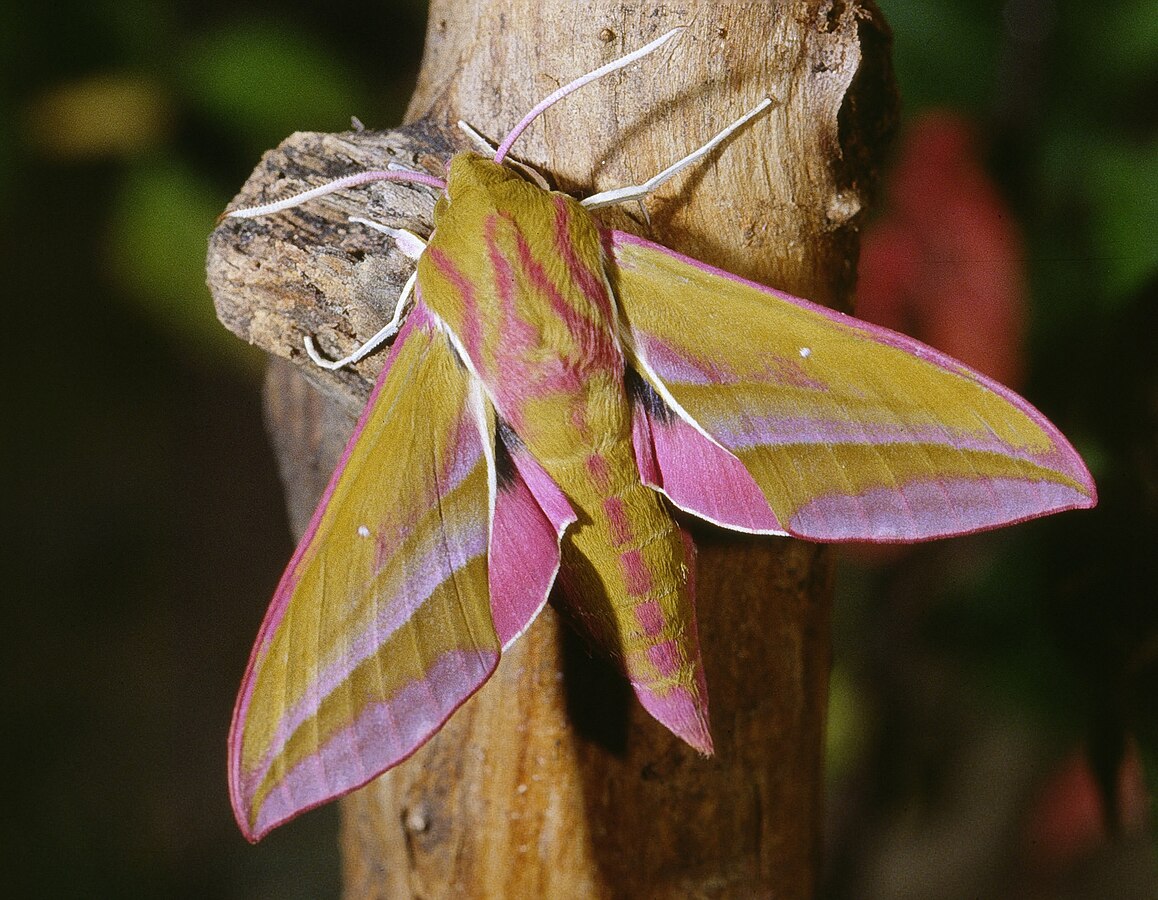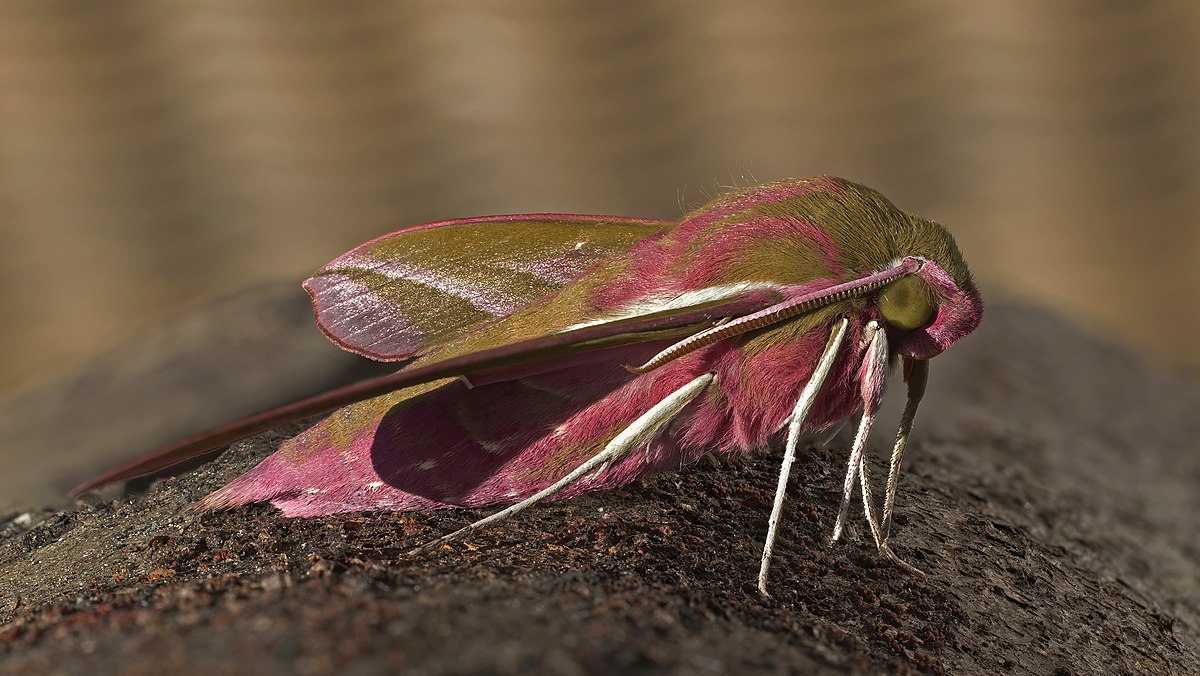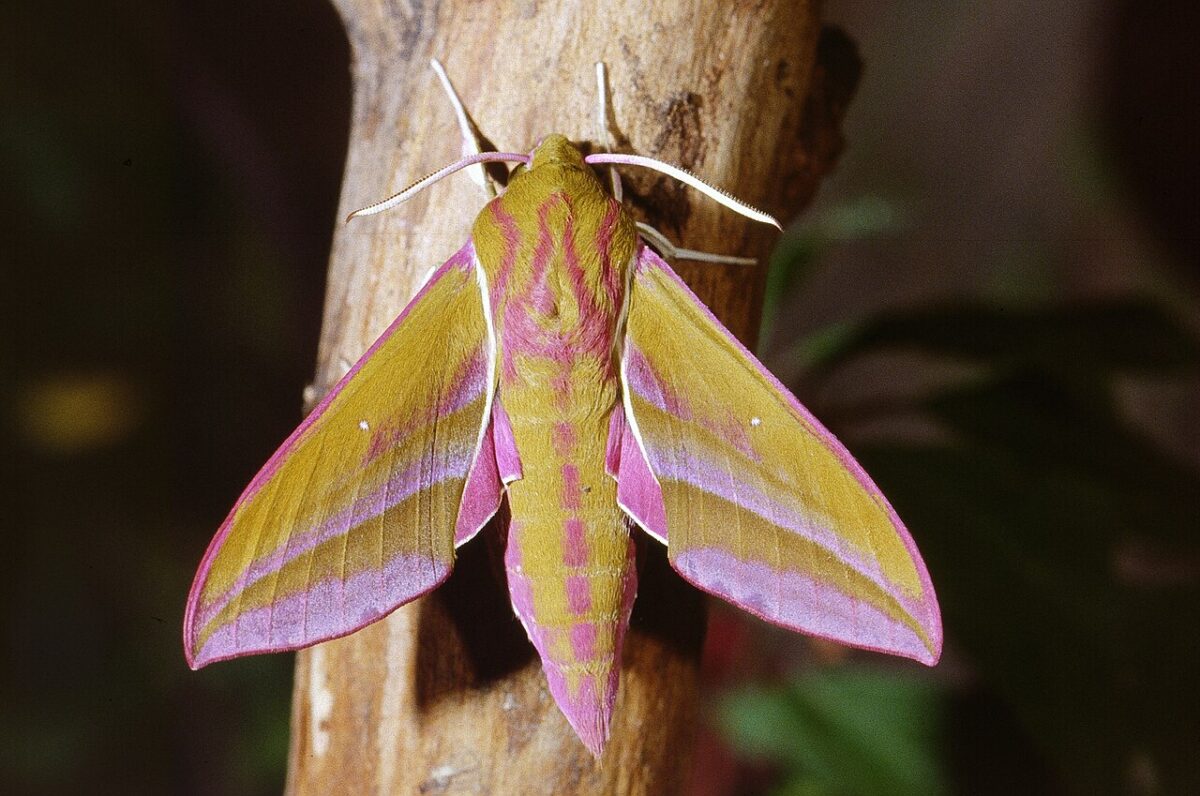When we visualize moths, often we think of a lacklustre creature flitting near a porch light. However, the enchanting Elephant Hawk Moth paints a different picture altogether. This insect is a resident of many places like Wales, Ireland, and England. Interestingly, it also finds a home in western and southern regions of Scotland. Let’s take a closer dive into its distinct features.
A Detailed Look at the Elephant Hawk Moth’s Life Cycle

For the Elephant Hawk Moth, May to July is the phase of appearing as a moth, whereas, the latter part of July through September sees them as intriguing caterpillars. These creatures adapt well in different habitat types. You can spot them in woodland clearings, around waste grounds, and even in gardens! Nectar, willow herbs, and bedstraws are their top favourites when it comes to food.
For those interested in garden wildlife, here are some interesting facts about their feeding habits:
- Apart from nectar, these moths are attracted to Fuchsia flowers.
- They are also fond of Petunia and Honeysuckle plants.
Distinctive Features and Adaptations
One of the unique features of the Elephant Hawk Moth is its size. But wait till you catch sight of its captivating hues! Its vibrant pink body outlined with wings of standard brown is an astonishing sight. Furthermore, an understated streak of the same pink adorns its back. Would you believe that such a vision belongs to a moth population? Indeed, this moth is nothing short of a delightful surprise to the eyes!
From Caterpillar to Moth: An Engaging Transformation

The ‘Elephant Hawk’ part of their name, takes inspiration from the caterpillar’s trunk-like snout. In times of danger, the caterpillar exhibits a fascinating behaviour – it pulls the snout inwards, causing its head to inflate. This exposes four eye-like marks that are striking due to their large size. The caterpillar exists in shades of brown and occasionally in a charming green.
With the arrival of spring, the caterpillar retreats to the ground, maturing to eventually resurface as the magnificent Elephant Hawk Moth.
The Elephant Hawk Moth in Flight and as Prey

Let’s not forget to mention how splendid they look in flight. Owing to their particular coloring, they appear to shimmer red and green when on the move. Although a sight to behold, their adult life also means becoming potential prey to bats.
Conclusion
Across the globe, there are countless moth species as interesting as the Elephant Hawk Moth. Should you ever find yourself in parts of the world where this moth dwells, spare a moment to admire its elegance. Navigate to any search engine and type ‘Elephant Hawk Moth’. You’ll see the radiant creature that it is. It’s just one example of the diverse world of moths, which holds much more than the usual colourless critters we encounter.
Related Resources: